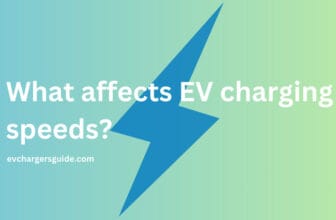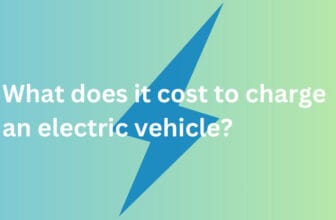
Yes, you can charge your Tesla with 110V charger or at standard 110V/120V outlet.
You can charge your Tesla anywhere between 110V/120V, 240V, and 400V depending on the maximum charge rate supported in your Tesla model.
But 110V/120V is the voltage level all Tesla models support.
There is no issue in charging your Tesla at 110V.
The only thing it needs is a 110V compatible charger. Tesla mobile connector is a good charger offered by Tesla supporting 110V and 240V charging.
Now you know that you can charge your Tesla at 110V, then consider some pros or cons of it.
In This Article:
Tesla 110V Charging Speed
How Fast Does Tesla Charge on 110V?
Charging with 110V normally gives 3 to 6 miles of range per hour of charging.
So if you charge overnight or say for 10-12 hours, you can get a good range – although not Full charge – in your Tesla, which will be enough to head on for the next day.
Remember 110V charging will offer the lowest charging speed, compared with 240V or superchargers.
How long does it take to charge Tesla with 110V?
But remember, to fully charge the Tesla with 110V of charging it can take around 3-5 days!
The charging time to charge from 80% to 100% can take almost the same time or double time as it takes to charge from 0 to 80%.
Here is the table below showing Tesla charging speed at 110V/120V, charging with Tesla mobile connector with Nema wall plug.

Source: Tesla.com
Tesla 110V Charging Cost
In terms of the cost of charging with 110V, the calculation is the same as other chargers with different Voltages like 240V or 400V.
But here is a little tweak with lower charging speed.
There is mostly a Per Kilowatt-hour electricity rate or per minute rate depending on your location to charge Tesla.
So how long you charge and how much you draw the power will decide the cost of charging.
There is some debate about charging cost of Tesla with 110V vs 240V.
So let’s examine and see, if is there any difference.
Tesla 110V charging cost vs 240V charging cost
Ideally, you are drawing the same power from both 110V and 240V to charge the battery to the same level.
Say, to charge the Battery from 20% to 100% it will need the same power, no matter if you charge from a 110V or 240V charger or supercharger.
But the difference is,
During the charging session, there is some amount of power being consumed by the car system, like the computer and cooling system. This is called vampire drain.
Like a fixed amount of power being consumed during charging session.
Now how long it takes to charge will decide how much power is consumed by Tesla system during a charging session or vampire drain.
So here we can see, that the longer the charging session higher the background power consumed by Tesla system.
That extra power consumed as a vampire drain during charging is directly proportional to the charging time.
Now, 240V charging takes lesser time than 110V to charge the battery for the same amount of power.
So fixed power consumed or vampire drain in 240V charging session will be lesser than the 110V.
In this way, though 110V charging ideally draws the same power as 240V, but due to longer time it takes to charge to same level compared to 240V charging, the power drawn by car system during 110V charging session will be higher than 240V session.
So, in that way, to charge Tesla to same level with 110V, it will need more power to compensate the power consumed as a fixed load compared to 240V charging.
So 110V charging will cost some extra that way which then becomes higher than 240V charging session cost.
For Example,
Let’s say you are charging Tesla with 110V for 10 hours then vampire drain could take around less than 1% of battery.
Now depending on your model this can be around just 0.5kW to 0.75kW of extra power consumed. (It is not a big drain, right!)
Plus, if you have turned on sentry mode or climate control then it will consume additional power during the charging session.
So that much amount more power will be consumed by Tesla while charging with 110V.
Accordingly, the total cost of kWh or minute will increase for that particular extra power consumption or extra time taken for charging.
But, still considering the power drain difference is not significant, the cost gap between charging at 110V or 240V won’t be too big. So either 110V or 240V charging, the cost will be nearly the same.
Tesla Battery Health with 110V Charging
A slower charging rate is better for EV batteries.
If the charging session is taking anywhere below 3 hours for a complete charge then some research shows that significantly affects the Tesla battery negatively.
So charging Tesla with 110V or 240V is all good for Tesla battery health and lifespan. As both take more than 3 hours for a complete charge.
(Tip: Do you want to know the FULL difference between charging Tesla with 240V and 110V/120V? I have a dedicated article comparing the charging between 110V/120V and 240V taking an example of Tesla wall connector vs mobile connector.)
Conclusion
So yes, you can charge your Tesla with 110V and it is all good to charge your Tesla.
Considering if you are ok with mainly charging speed and time it takes to charge with 110V power.
I hope you have found this article helpful.
Then see you in the next article!

![What is the cost to install Tesla charger at Home? [Detailed Guide]](https://evchargersguide.com/wp-content/uploads/2023/12/how-much-does-it-cost-to-install-tesla-home-charger.jpg)


![Tesla Charge Stats Tesla app [Complete Guide] | Tesla App Not Showing Charging Stats [Fixed!]](https://evchargersguide.com/wp-content/uploads/2023/12/Tesla-app-charge-stats.jpg)













110V charging is slow for me honestly. I travel 120-150 miles day round trip. So have to charge every night. 240V charging works best for me. Bought Wall connector 3 years back. But I also have Tesla mobile connector. I use it in remote places if can’t find any public charger nearby. Yup! there I found 110V charging valuable.
That’s correct. For long route drivers 110V charging is not enough, except when you don’t find any station. Then just one outlet feels good when you see it. I use it mostly when I travel for camping or trekking and don’t see any charging stations near by. I always have one mobile connector in trunk just for this purpose.
I have Level 1 portable charger. And I daily use to charge on 110V standard outlet. No issues.
Ya, I only use standard outlet charging my Tesla Model 3. I am using Nema 5-20 110V outlet in my garage. Overnight charging twice a day. Works enough for me.
That’s great! Seeming you’re enjoying your EV journey.. cool Cheers!